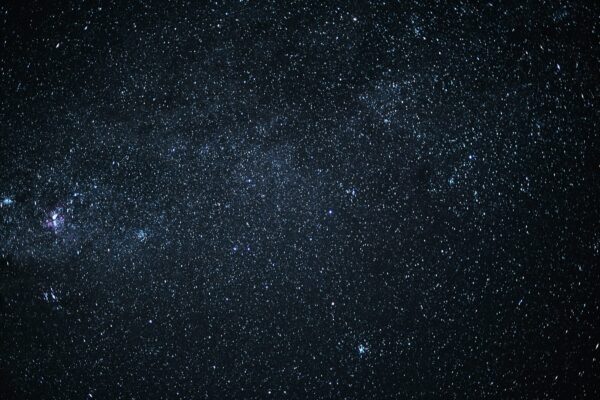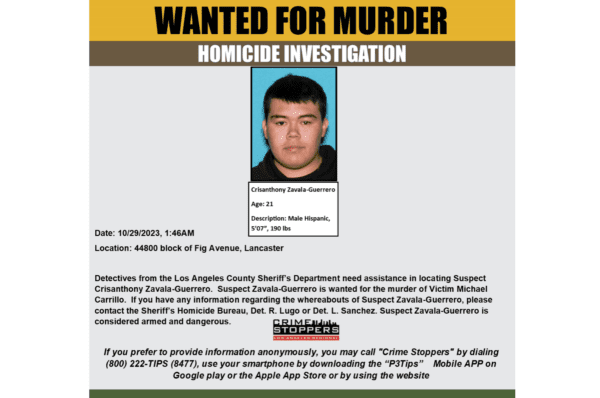People have looked at the sky for millennia in awe of all the celestial wonders happening above. Even today with advanced technology and a more nuanced understanding of our solar system and the galaxies beyond, as 2024 approaches we continue to look to the sky with a great sense of fascination.
The most anticipated celestial event of the coming year is the total solar eclipse on April 8. Much of the U.S., Mexico and Canada will be in the path of totality, meaning people in the right place will see the moon perfectly lined up in front of the sun, leaving a shaded circle of the moon and only the outer aura of the sun. The last total solar eclipse was Aug. 21, 2017. Many people marked the occasion by going outside wearing eclipse glasses and bearing witness to the remarkable event.
But stargazers don’t have to wait until April for exciting occurrences in the upper atmosphere. Many thrilling astral events will happen throughout the year, many of which do not require special equipment to view. What is the most essential thing to do to increase the chances of a good view? Find a place with dark skies or at least a sky some distance away from the light pollution in cities.
Stacker sourced information from NASA, weather channels, and astronomy sites to list 2024’s most notable astronomical events in chronological order to help people plan their sky viewing for the year.
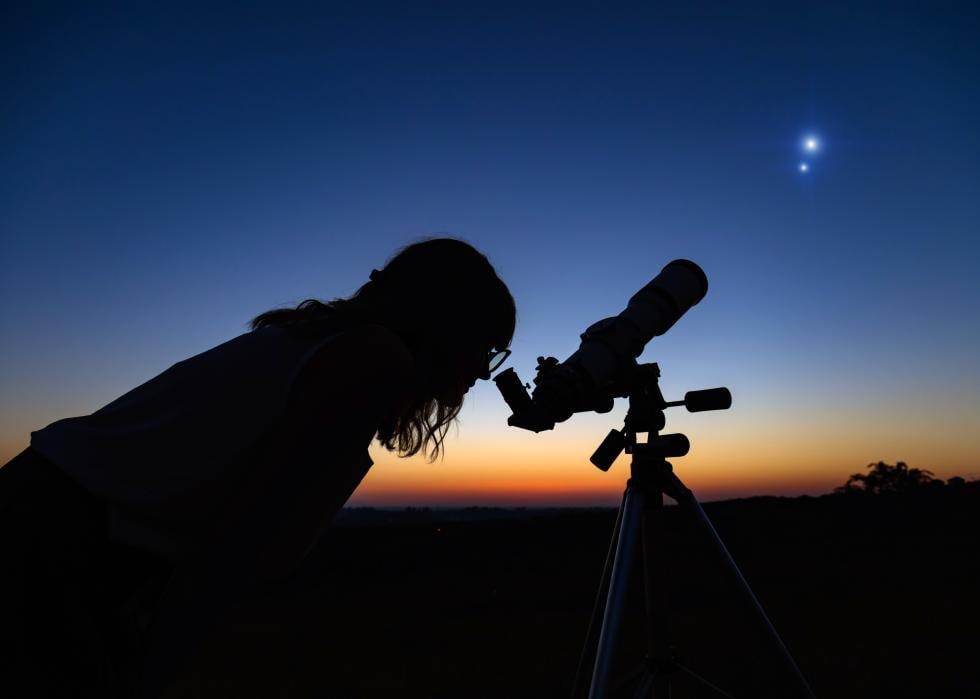
Feb. 22, 2024: Venus and Mars conjunction
February’s astronomical event isn’t exactly the most rare. Venus and Mars are conjunct, meaning they get very close to each other in the sky about once a year. The last time Venus and Mars cozied up was July 27, 2023.
What makes this yearly event special is its accessibility. Venus is the brightest object in the sky because the thick clouds in its atmosphere draw in heat and light. Mars isn’t quite as bright as Venus, but it’s still easy to spot the red planet with the naked eye.
It’s ideal to be in southern latitudes to see these planets together. Wake up before sunrise, head to an area without tall structures or trees, and look to the southeastern horizon.
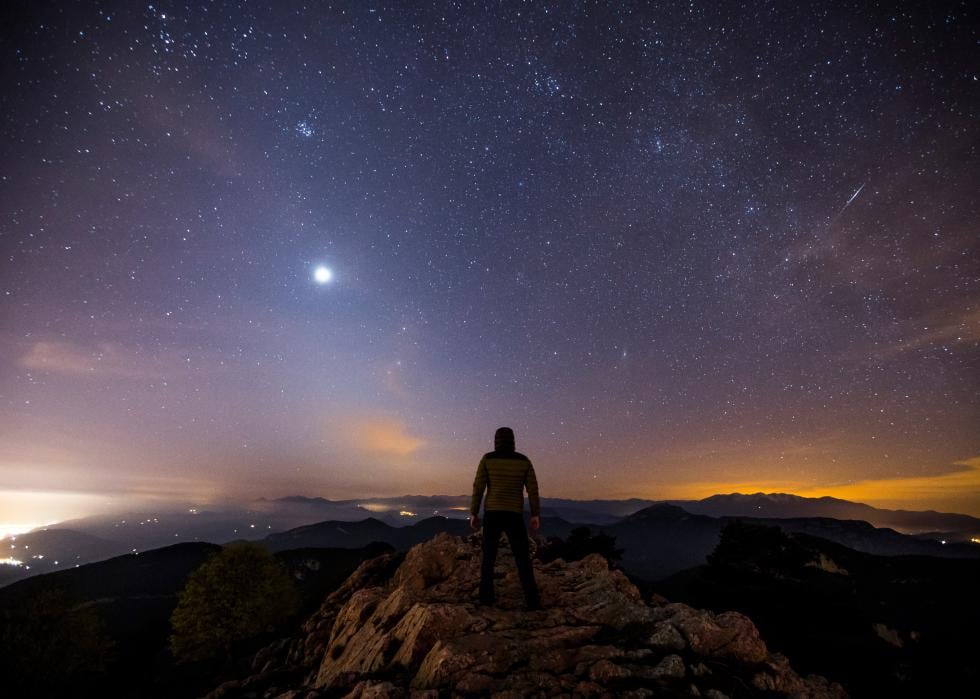
Feb. 26, 2024: Zodiacal light
Just a few days later, a two-week period that’ll create the best time to see a light phenomenon called zodiacal light begins. Zodiacal light, also known as false dawn, appears just after twilight as a cone of faint light spreading upward from the horizon. Scientists believe zodiacal light is sunlight reflecting off dust clouds sucked in by Earth’s gravity.
Increase the chance of seeing this serene light show by planning to be somewhere away from city lights — the darker the sky, the better. Be sure to look up the exact time of twilight in the area to know when the zodiacal light should begin to appear.
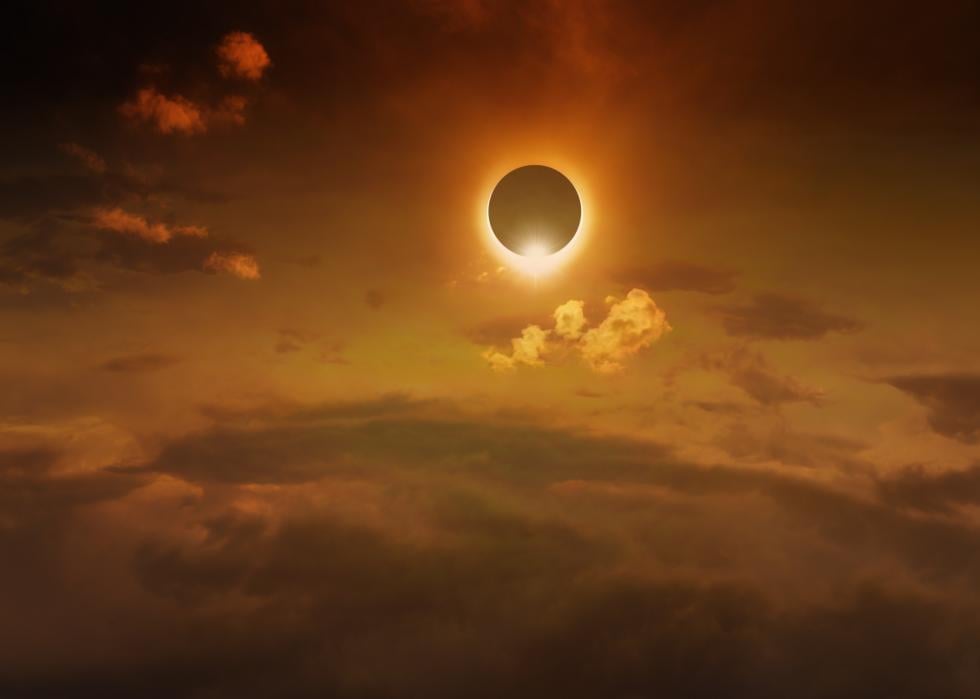
April 8, 2024: Total solar eclipse
April brings the celestial star of the show for all of 2024, when people across North America can see the moon pass exactly in front of the sun, creating darkness during the day and a ring of fire visual effect from the sun.
To get the best view, be in the 115-mile wide path of totality, stretching across the United States from San Antonio and Dallas, Texas, through the Midwest to cities like Indianapolis and Cleveland, and through the Northeast, from Buffalo, New York, to Maine.
It’ll take the moon about 2.5 hours to complete its journey crossing the sun, but totality will only last about four minutes. Those who don’t make it within the path of totality will see a partial eclipse.
Even during the eclipse, looking at the sun is dangerous, even if viewing it through a camera or telescope lens. Make sure to wear eclipse glasses to avoid permanent eye damage.

April 12, 2024: ‘Devil comet’ crosses the sky
While the total solar eclipse sparks imaginations, a second, even rarer event will occur at the same time. A large comet commonly called the “devil comet” will make its closest pass by Earth in 70 years. The comet, 12P/Pons-Brooks, got its nickname because of two ice and gas formations that mimic the shape of horns. The last time 12P/Pons-Brooks was visible to us was in 1954.
It’ll be visible during the eclipse, although it is not recommended for viewing at that moment since the eclipse’s darkness is short-lived and could lead to accidents. Sticking to one celestial event at a time, 12P/Pons-Brooks will be close to Jupiter days later on April 12 to 14 and closest to the sun on April 21. To increase the chances of seeing the devil comet, gaze on the part of the sky where Jupiter appears.
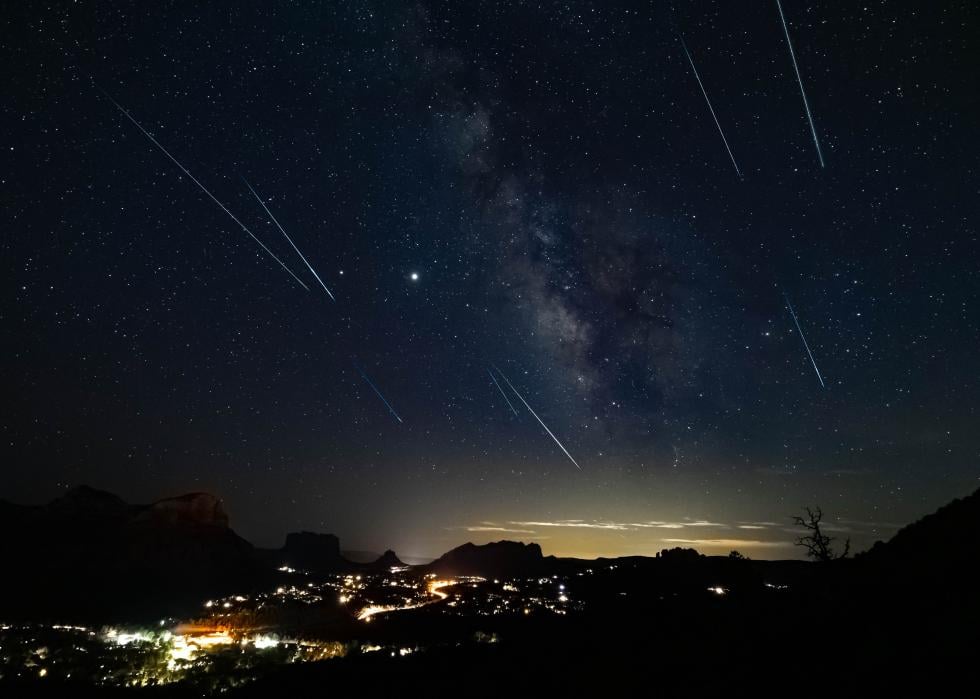
Aug. 12, 2024: Perseids meteor shower
The Perseid meteor shower is visible every summer, and 2024 will be no different. It occurs when Earth’s orbit goes through the debris a comet left behind.
The moon’s brightness is the most important factor in being able to see the meteor shower clearly; when the moon is dim, the sky is darker, making the Perseids easier to see. On Aug. 12, 2024, the moon will be at half-brightness during the peak of the Perseid meteor shower. It’ll create the best time to see these meteors light up the sky when it sets around midnight UTC.

Aug. 19, 2024: Supermoon
Ever look at the moon and note that it seems bigger than usual? Four full moons in the fall of 2024 will appear larger than life because the moon will have moved closer to the Earth than at any other time during the year.
The moon orbits around Earth in an oval shape. When it hits perigee, that is, its closest approach to Earth, it’ll also be at its fullest, known as a supermoon. Those who miss the supermoon on Aug. 19 will have a second chance to see another one during later lunar cycles on Sept. 18, Oct. 17, and Nov. 15 in 2024.
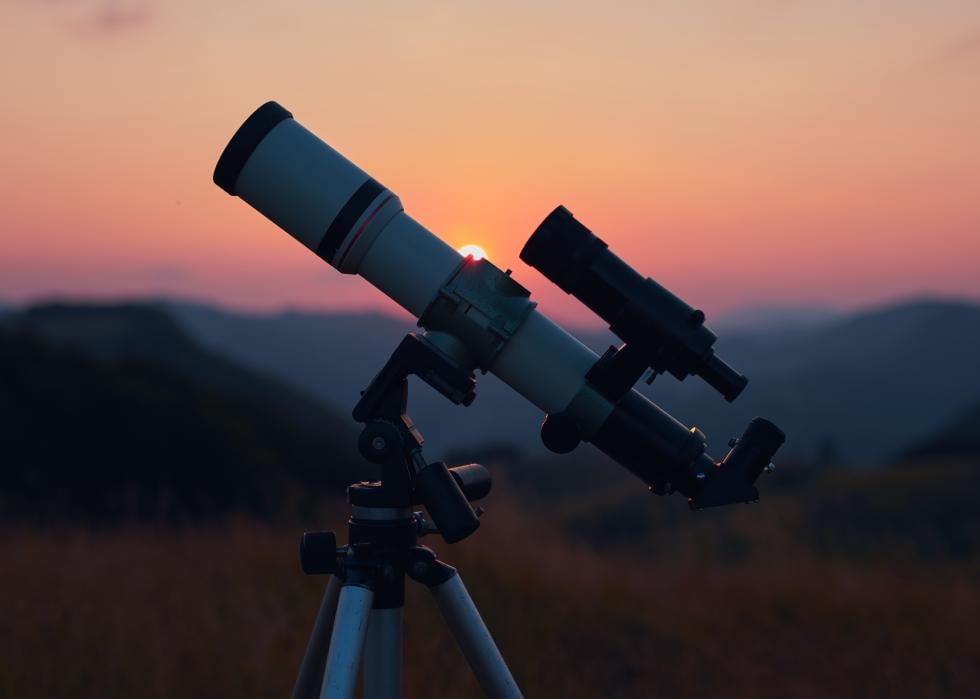
September-October 2024: Will Comet C/2023 A3 shine bright?
The biggest mystery of the stargazing world may be answered in the fall of 2024: Will a newly discovered comet shine bright, or will anticipation for this event go bust? Comet C/2023 A3 was first spotted in late 2022 and early 2023. Scientists determined the comet takes 80,000 years to complete an orbit around the sun. According to their estimates, it’ll reach its closest point to the sun on Sept. 28, 2024.
With any luck, the comet will be bright enough to be visible to people in the southern hemisphere without any equipment through the month of September. By October, the comet will pass the sun and may become visible to people in North America by Oct. 11 or 12, 2024. Scientists need more data about Comet C/2023 A3 to be sure, so for now, the comet remains a bit of a mystery.
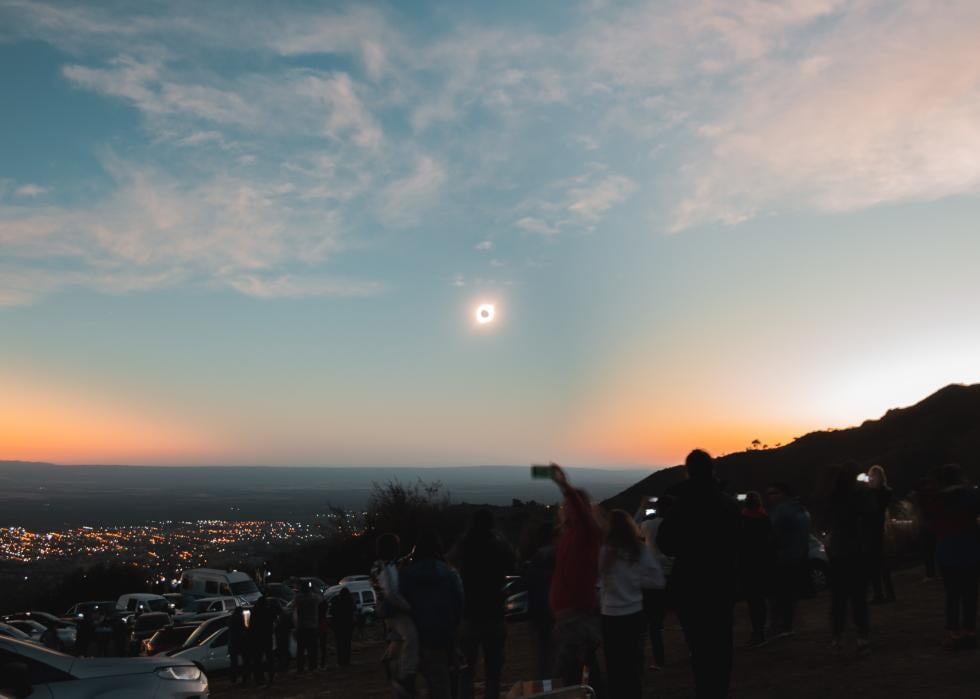
Oct. 2, 2024: Another solar eclipse
For those who didn’t get enough excitement from the total solar eclipse in April, a second solar eclipse will occur on Oct. 2. This time, people in South America will get the best show. The path of totality crosses over at the very bottom of Argentina and Chile. For people who don’t plan to travel to remote areas of southern Argentina and Chile, a partial eclipse will be visible in North and South America.
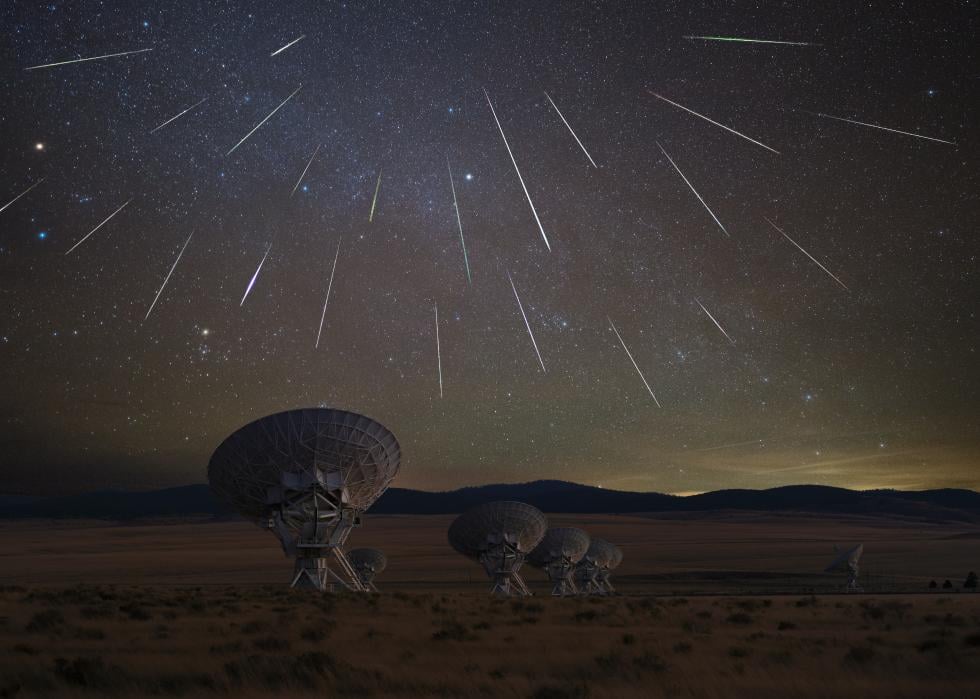
Dec. 13, 2024: Geminid meteor shower
Every December, the Geminid meteors return to fly across the night sky. The annual Geminid meteor shower is a great event for new skywatchers to view because it’s one of the most reliable annual meteor showers. With clear and dark skies, about 120 meteors per hour are typically visible when the Geminids peak. The meteors usually appear yellow and move quickly across the sky.
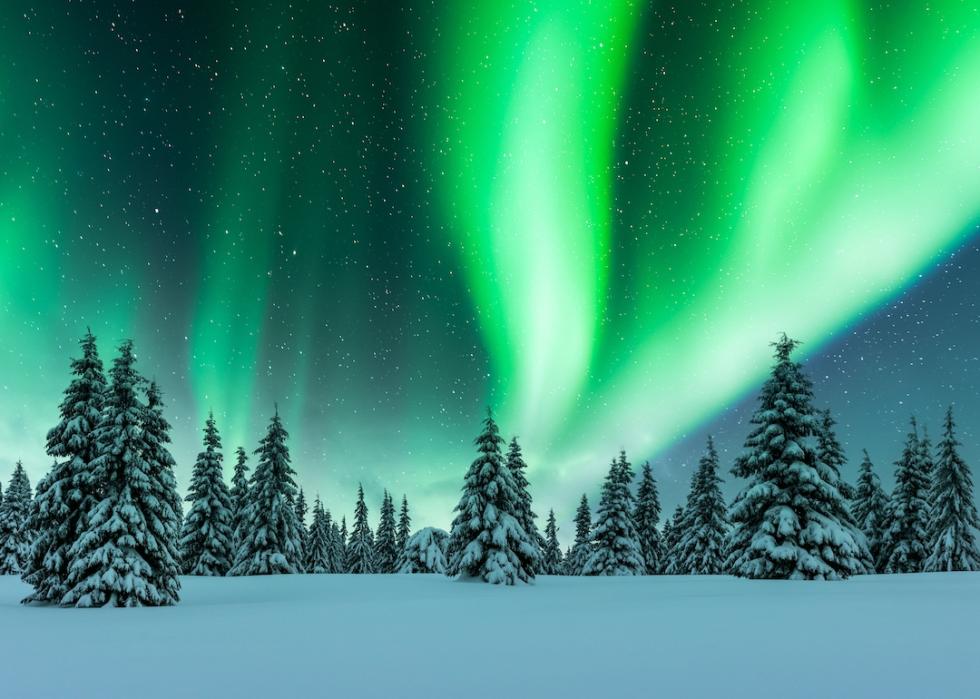
All year: Increased aurora activity
It’s likely 2024 will be the best year to check viewing the northern lights off bucket lists. Scientists say increased solar activity is likely to peak in 2024, which means the aurora borealis could be visible more often than in years past. The best opportunities to see the effects of a stronger solar cycle should occur from January to October, especially around the spring and fall equinoxes.
Although the northern lights may be strong enough to be visible in parts of the contiguous U.S. occasionally, stargazers’ best bet is to travel further north. Northern destinations such as Fairbanks, Alaska; Yellowknife, Canada; and Nordic countries offer the best opportunities to see beautiful green and red hues dance across the night sky.
Written by Sheeka Sanahori. Story editing by Carren Jao. Copy editing by Kristen Wegrzyn. Photo selection by Clarese Moller.
Republished pursuant to a CC BY-NC 4.0 license. This article’s original version was copy edited.
Re-published with CC BY-NC 4.0 License.

